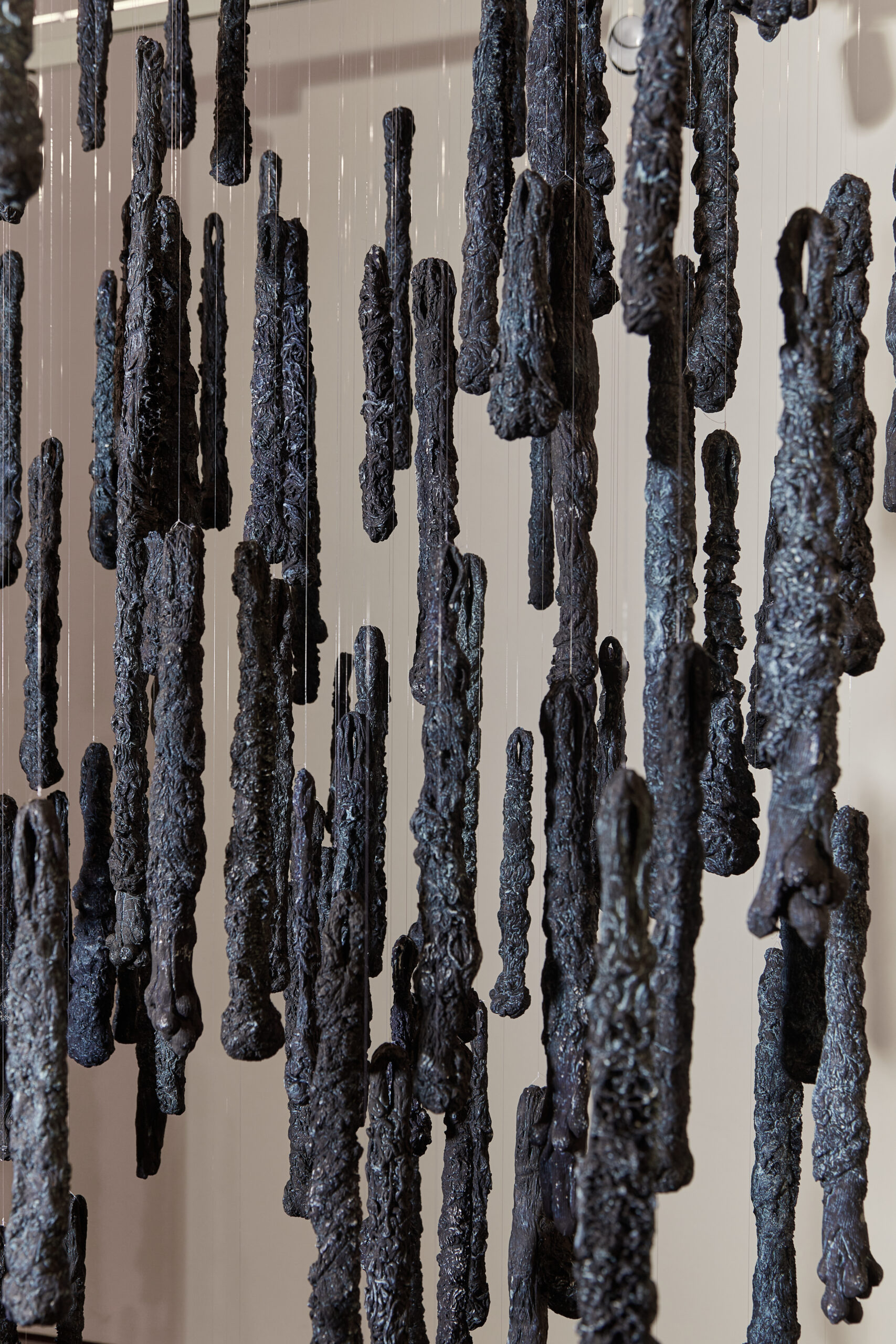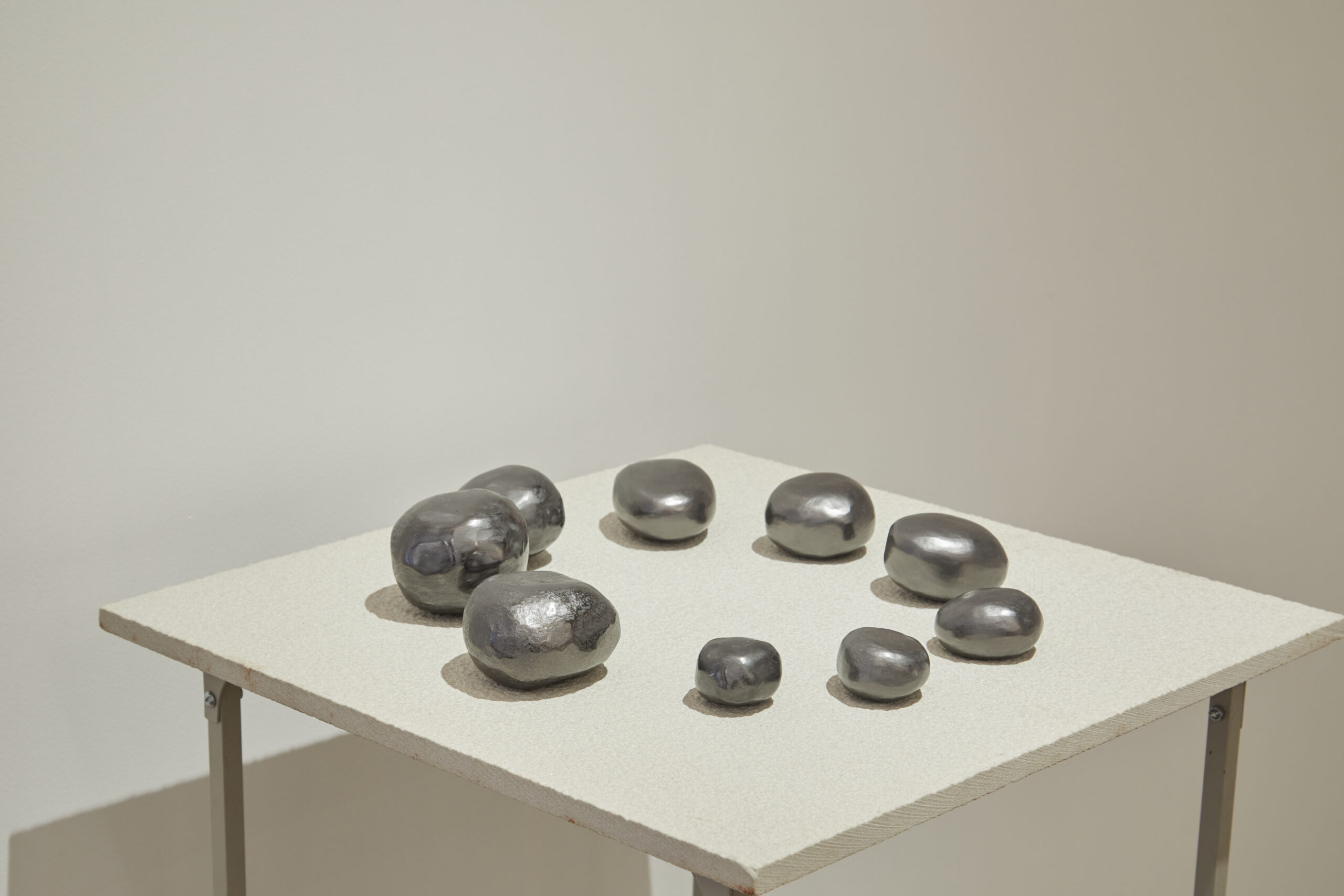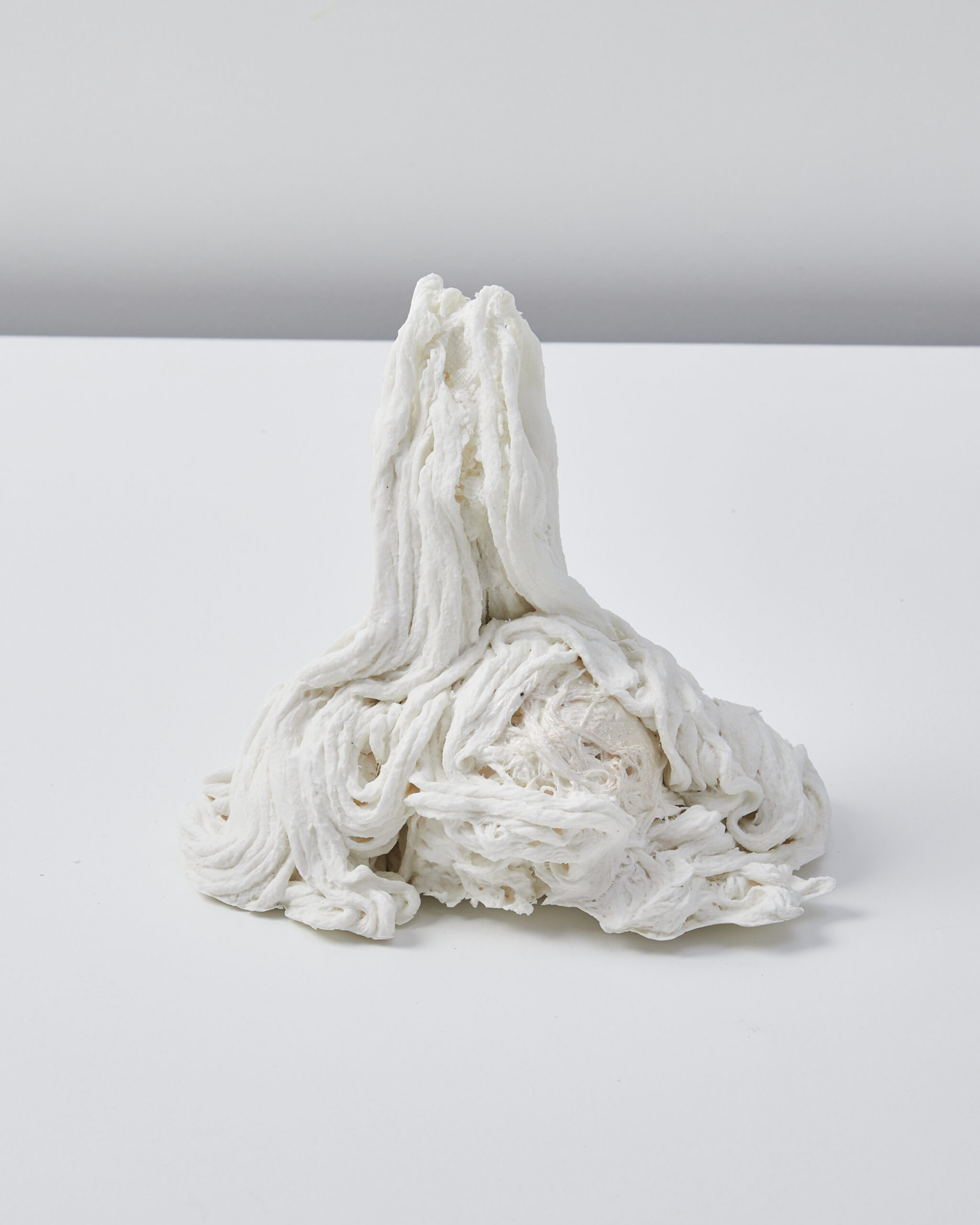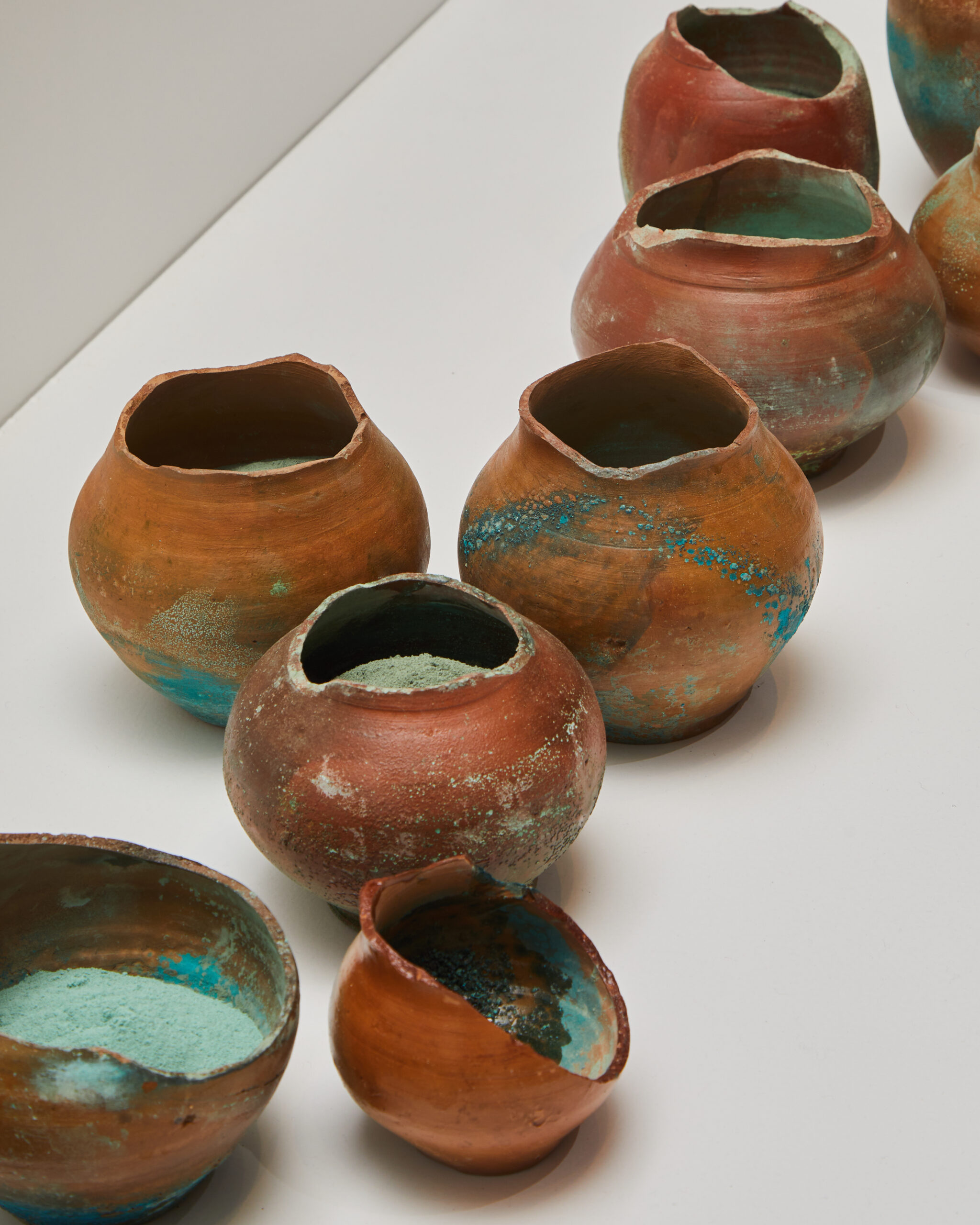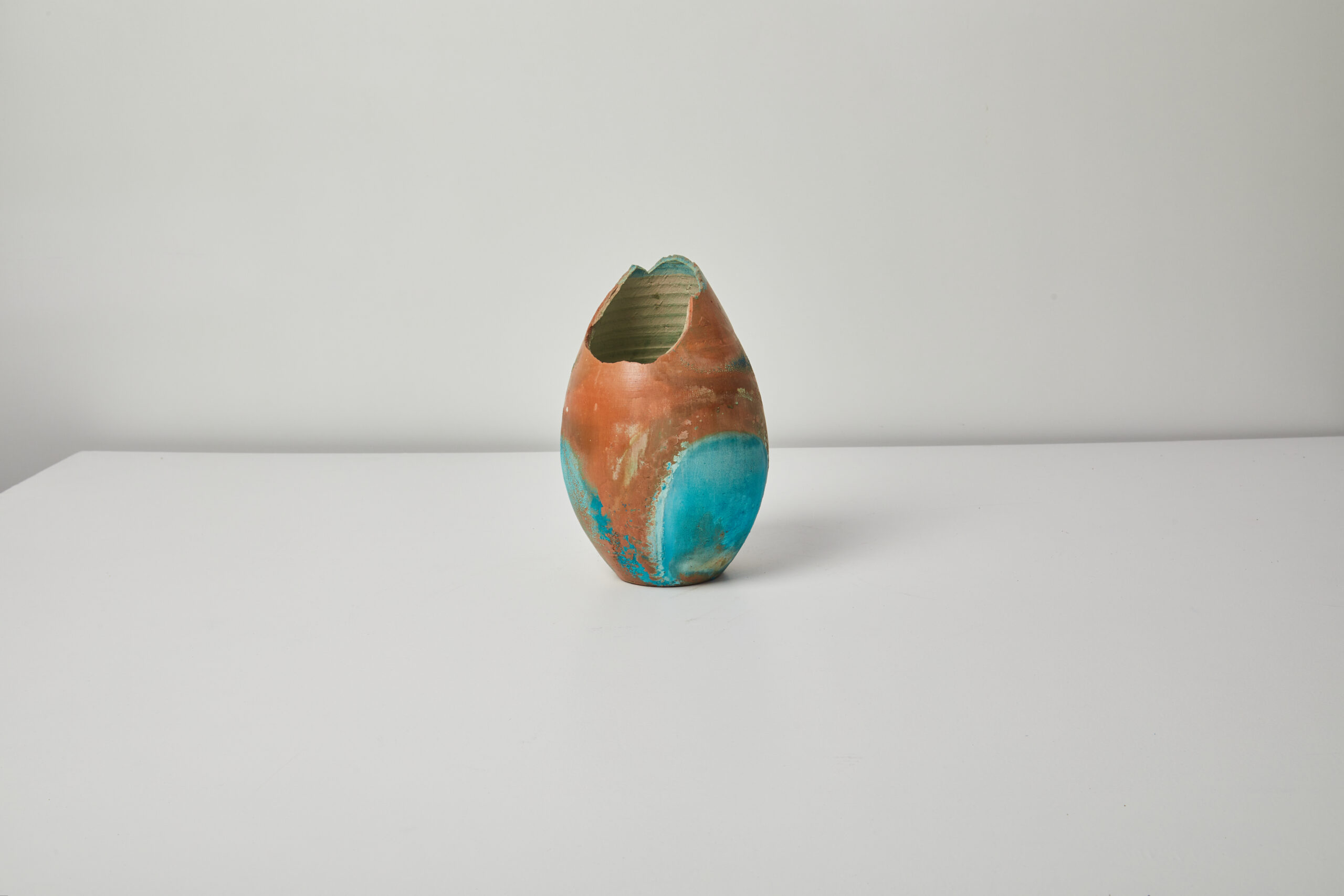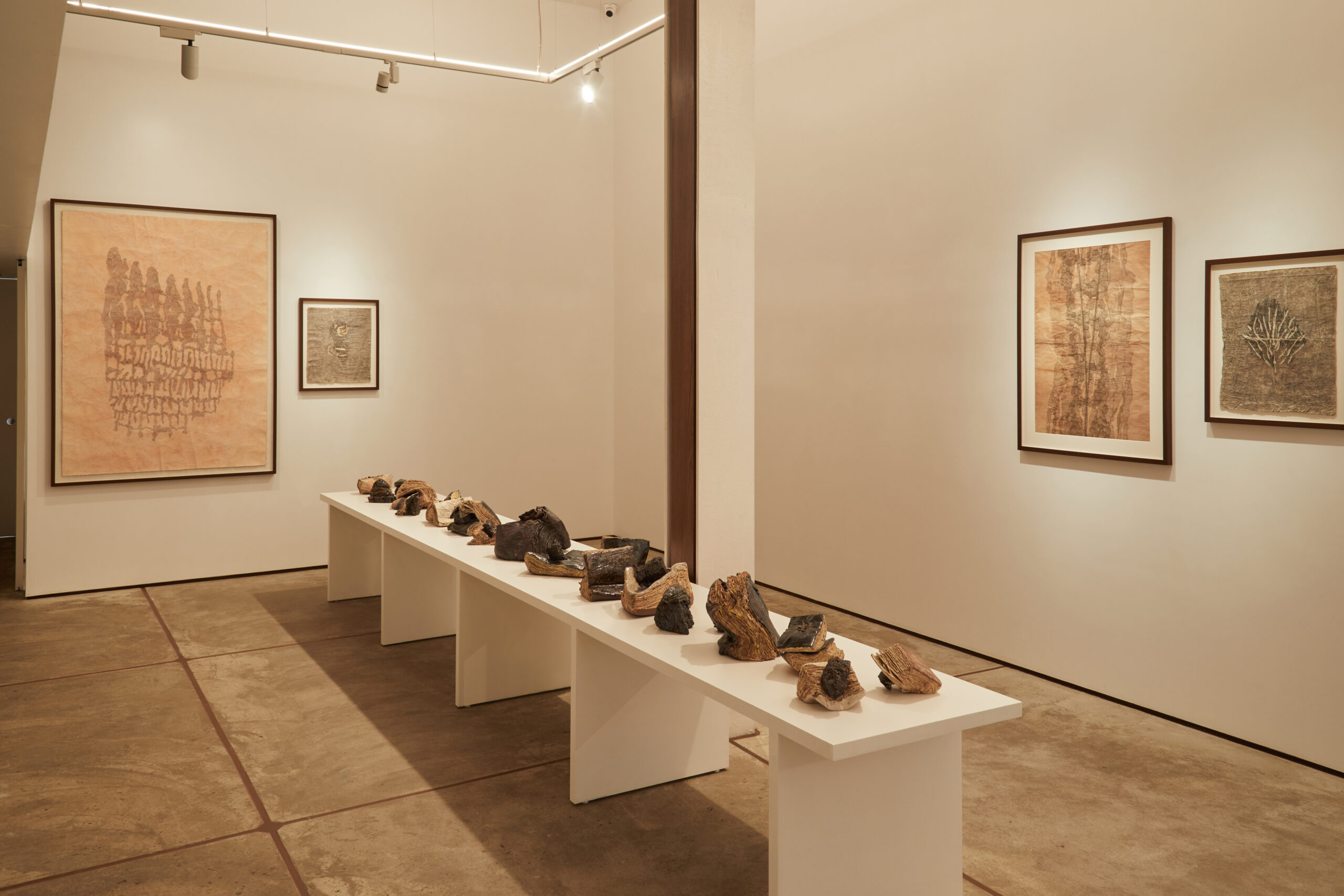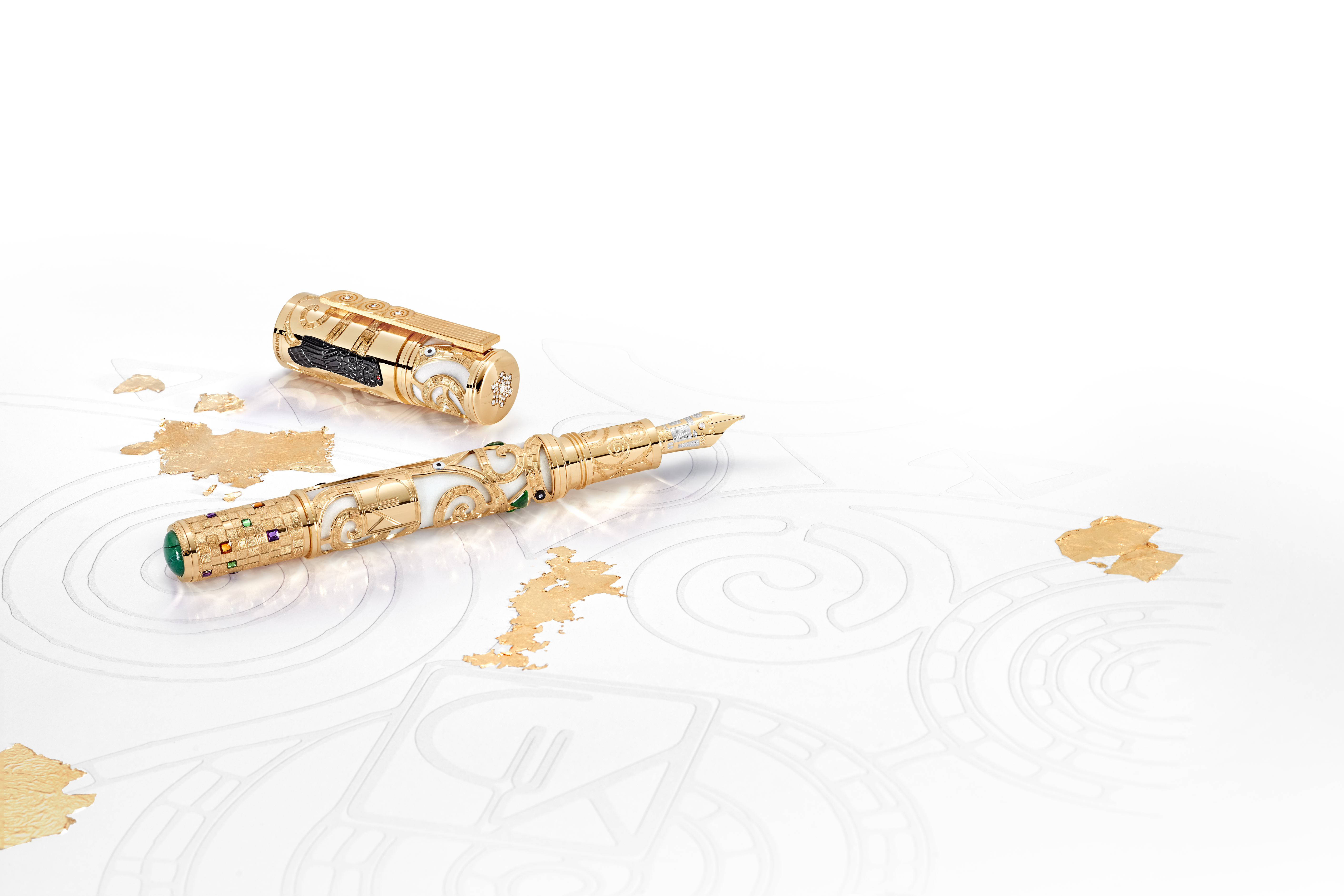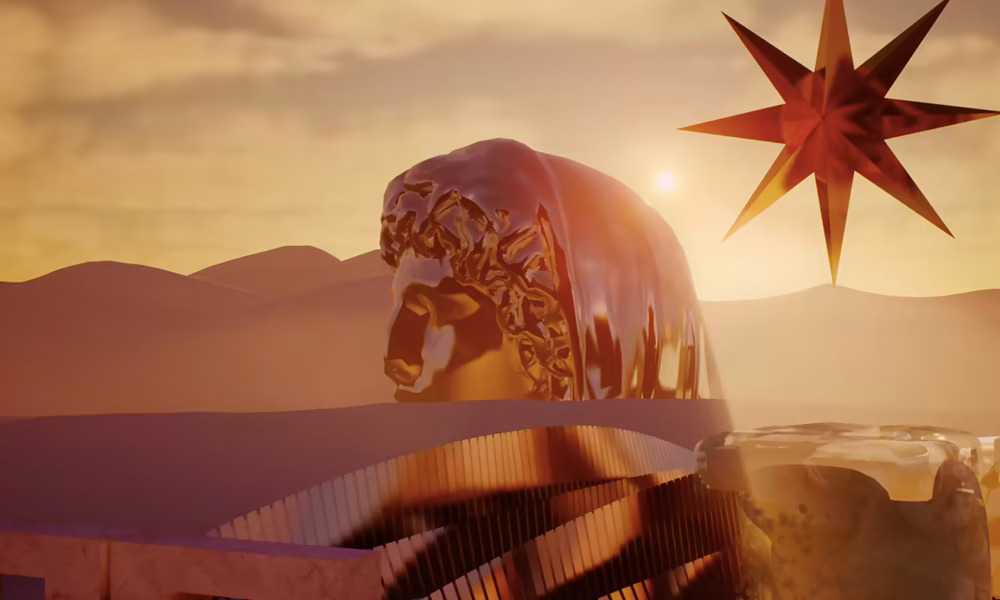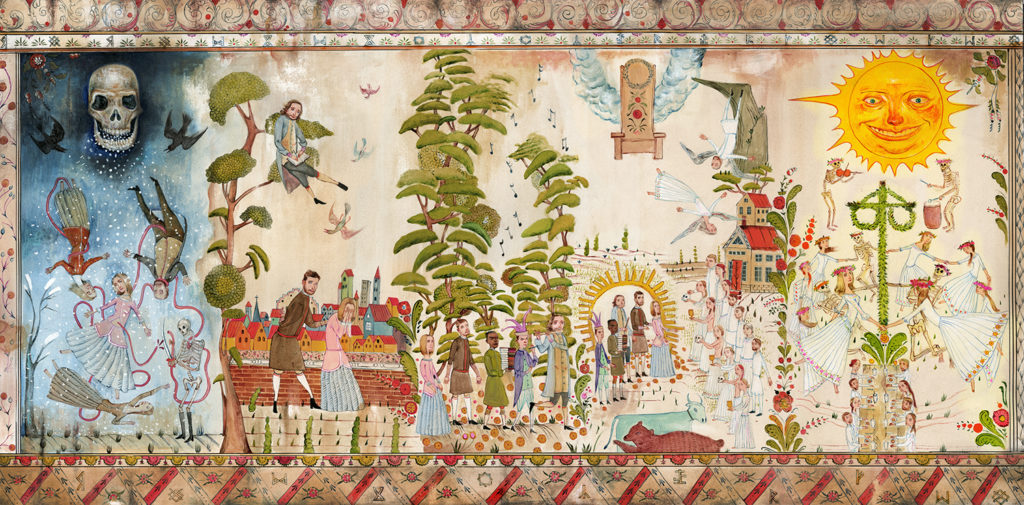Savia Mahajan’s artistic journey began in Mumbai, where she embarked on formal training at the L.S. Raheja School of Art. Afterward, she delved into the realm of Indian Aesthetics, completing her post-graduation at Jnanapravaha in 2022. Although initially trained as a painter, her artistic evolution since 2010 has seen a shift towards ceramics.
These transformative developments in Savia’s practice paved the way for “Liminal,” her inaugural solo exhibition at TARQ in 2017. Now a veteran at TARQ, she unveils her latest solo exhibition, titled Amino Soup which builds on the themes of resurgence and materiality. The name Amino Soup is derived from “amino,” the building blocks of protein, which represents the ancient liquid environment where life first began on Earth. The materials used to create this show are reminiscent of such life-starting substances. “The vats of indigo dye which we used during the creation of these pieces also looked like this amino soup — it looked like the first water due to its colouration,” says Savia Mahajan, recounting the story of how her show received its title.
Amidst the tumultuous backdrop of the pandemic, the artist confronted the loss of access to her beloved studio. In response to this challenge, she gave birth to “Palm Pebbles,” an interactive installation, which is a part of her show, characterised by unfired clay, adorned with graphite, seeds, glass fragments, and lead. Mahajan emphasised that this theme, centred around change, disintegration, and creation, has been at the core of their artistic practice. The seeds of the works to be showcased in the exhibit began to germinate around 2019 when she started exploring various concepts and ideas, including indigo dye. She highlights two key factors that drove her to create this installation: the desire to create, even when her studio space was unavailable due to COVID-19, which led to the production of smaller-scale, apartment-friendly pieces, and the need to connect with something natural and nature-oriented, like the clay-based palm petals, providing a tactile link to the natural world. These tactile pebbles beckon viewers to engage with them, inviting introspection into their weight, weightlessness, and intrinsic material essence.
Parallelly, during artistic introspection, the works Exuvia and Tempus Fugit emerged, each unravelling distinct narratives. Exuvia explores the profound theme of shedding one’s skin, metaphorically and perhaps even literally, as a representation of growth and transformation. “In my practice, I am very interested in this constant cycle of creation and destruction. This cycle happens everywhere; on the planet, in our bodies, around us. Exuvia, which is the act of insects shedding their dead-skin, was something that intrigued me, knowing that such an act is repeated everywhere, everyday.”
Palm Pebbles
2020-2023
Unfired clay, adorned with graphite, seeds, glass fragments, and lead
Various sizes
Emergency-old-longing 20
2023
Porcelain, paper, threads, mother of pearl fired at 1250° C, refired at 850° C
5 x 7 x 6 inches
Meanwhile, Tempus Fugit delves into the chemical alchemy of time itself, a mesmerising journey of evolution and adaptation unfolding with each passing moment. Tempus Fugit is a Latin phrase, denoting the concept that time swiftly passes. Indeed, this work can be perceived with both simplicity and fundamental clarity, while concurrently holding a profound complexity due to its exploration of the erosive essence of time. “We can observe this phenomenon in our own lives, the subtle and continual erosion brought about by the passage of time,” explains Mahajan. “We remain oblivious to this process. This installation serves as a contemplation of the corrosive nature of time, highlighting the inevitability that what we hold dear will eventually slip through our grasp.”
“Pietra,” which is Mahajan’s latest series of ceramic books, gives insight to her artistic odyssey, where she talks about skillfully wielding the primal forces of fire and stone, and employing them as potent symbols of the unrelenting pressures exerted upon external entities. This narrative plunges deep into the profound notion of previously dormant objects being compelled to liberate themselves from their inert state, ultimately undergoing a metamorphosis. This thematic journey finds its core in the collection aptly named “Emergency Old Longing,” a body of work that draws inspiration from her earlier creations, most notably “Liminal” in 2019. Within this collection, a palette of rust and white hues assumes a pivotal role, infusing the artworks with an unmistakable sense of urgency. These hues impel the pieces to undergo a transition from one state to another, creating a sense of urgency that permeates the abstract, surreal, and occasionally eccentric forms, now serving as symbols of their previous confinement, bursting forth in a pursuit of evolution.
Tempus fugit
2020-2023
Varnished terracotta pot with broken rim, verdigris pigment
5.5 x 8 inches
Pietra 9
2022
Paper clay, iron oxide, tin based slips, laterite, ash
fired at 1250°C
10 x 7 x 4.5 inches
Yet, the true masterpiece of this exhibition, the pièce de résistance, lies in the collaborative endeavour known as “Pillars of Creation.” This extraordinary work is the fruit of a partnership with Ashok Siju, a skilled artisan steeped in the rich tradition of Indigo dyeing. Hailing from the Vankar community of Bhujodi village in Kutch, the artist is deeply connected to the intricate world of indigo dyeing. This craft involves not only the complexity of the dyeing process but also the fermentation of the vats used in underground settings. The vats, with their distinctive blue appearance, resemble a kind of “amino soup,” reminiscent of the primordial waters where bacteria and fermentation collaborate over time to process indigo.
Intriguingly, two ancient techniques that have been part of human history for millennia converge in the artist’s work. One method involves crafting clay pots, tiles, and bricks, embodying the essence of human craftsmanship. The other revolves around the liquid art of dyeing, a tradition stretching back to the time of the Indus Valley Civilization. These age-old practices harmoniously coalesce in a singular piece of art known as “Pillars of Creation.”
This work, much like all of Mahajan’s works, embodies the perpetual cycle of creation and destruction, of shedding old layers to emerge anew. It stands as a testament to the enduring spirit of artistic innovation and resilience, a beacon of hope amid the ever-changing currents of life.
Words by Esha Aphale.
Images of installation courtesy of TARQ.
Cover image: Pillars of Creation by Savia Mahajan in collaboration with Ashok Siju.
